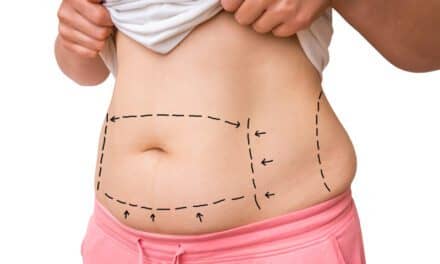Widening and thinning of the abdominal muscles may contribute to problems with the outcomes of abdominoplasty (“tummy tuck”) surgery – especially in women who have had multiple pregnancies, reports a study in the August issue of Plastic and Reconstructive Surgery, the official medical journal of the American Society of Plastic Surgeons (ASPS).
Pregnancy-related widening of the abdominal muscles may play a role in patient dissatisfaction after abdominoplasty, according to the study by ASPS Member Surgeon Gregory A. Dumanian, MD, and colleagues of Northwestern Memorial Hospital, Chicago. Their study describes a new technique for correcting excessive abdominal muscle width in women undergoing tummy tuck surgery, a media release from Wolters Kluwer Health notes.
How does pregnancy affect the abdominal muscles? To find out, the researchers analyzed the findings of abdominal CT scans performed for other reasons in 60 women, aged 18 to 45. The women were divided into four groups, based on pregnancy history: no pregnancies or one, two, or three or more pregnancies.
The CT scans were used to assess pregnancy-related changes in the paired rectus, which run along either side of the abdomen. Separated by a band of fibrous tissue called the linea alba, the rectus muscles form the abdominal muscle “six pack.” The CT measurements showed widening of the linea alba after pregnancy: from an average of 1.14 to 2.29 centimeters, with no additional widening after multiple pregnancies.
Childbirth was also associated with widening of the rectus muscles themselves. Average muscle width increased from 6.0 centimeters in women with no pregnancies, to 6.6 centimeters after one pregnancy, to 7.0 centimeters after two pregnancies. There was no further widening after three or more pregnancies.
The changes may be relevant to the outcomes of abdominoplasty after childbearing – particularly in women with separation of the abdominal muscles. This condition, called rectus diastasis, can cause abdominal bulging and weakness, making it difficult for women to regain core muscle strength after pregnancy, the release explains.
“Reconstruction of the abdominal wall is important not only for aesthetics, but also for the restoration of core pressure,” Dumanian and coauthors write.
Abdominoplasty is one of the top five cosmetic plastic surgery procedures, with more than 130,000 procedures performed in 2018, according to ASPS statistics. Tummy tuck is often included as part of a “mommy makeover” in women who want to restore the shape and appearance of their bodies after childbearing.
But women are sometimes dissatisfied with the results of abdominoplasty, leading to “re-do” procedures. Dumanian and coauthors note their study was prompted by several patients who were dissatisfied due to a persistent “floppy abdomen” after standard abdominoplasty, per the release.
The findings may explain why some women have continued abdominal wall laxity and inability to strengthen the core muscles, despite conventional abdominoplasty and rectus muscle repair. While the average rectus muscle width was seven centimeters, the authors note that some of their patients have had widening of up to 10 centimeters.
In these cases, Dumanian and colleagues believe that an alternative approach to abdominoplasty is needed, following the principles of hernia repair. The researchers describe and illustrate their approach in an online video and case examples of two patients with recurrent bulging of the abdominal wall after tummy tuck surgery.
“While this technique may be indicated for a minority of patients, evaluation of muscle width intraoperatively with rectus muscle narrowing may avoid patient dissatisfaction and revision procedures,” they conclude, in the release.
[Source(s): Wolters Kluwer Health: Lippincott Williams and Wilkins, Newswise]



